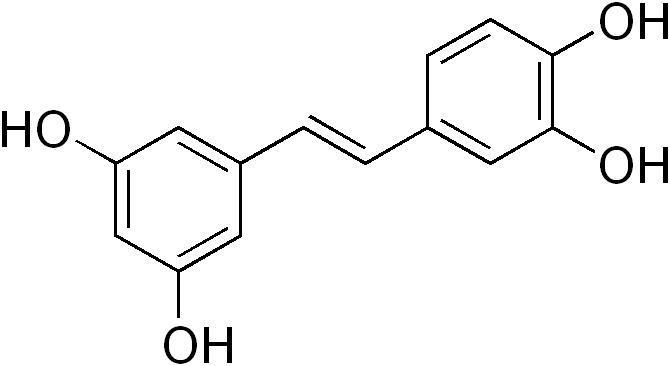Formula C14H12O4 | Molar mass 244.24 g/mol | |
 | ||
Appearance Light tan to yellow powder | ||
Piceatannol is a stilbenoid, a type of phenolic compound.
Contents
Natural occurrences
Piceatannol and its glucoside, astringin, are phenolic compounds found in mycorrhizal and non-mycorrhizal roots of Norway spruces (Picea abies). It can also be found in the seeds of the palm Aiphanes horrida and in Gnetum cleistostachyum. The chemical structure of piceatannol was established by Cunningham et al. as being an analog of resveratrol.
In food
Piceatannol is a metabolite of resveratrol found in red wine, grapes, passion fruit, white tea, and Japanese knotweed. Astringin, a piceatannol glucoside, is also found in red wine.
Biochemical study
A 1989 in vitro study found that piceatannol blocked LMP2A, a viral protein-tyrosine kinase implicated in leukemia, non-Hodgkin's lymphoma and other diseases associated with Epstein-Barr virus. In 2003, this prompted research interest in piceatannol and its effect on these diseases.
Injected in rats, piceatannol shows a rapid glucuronidation and a poor bioavailability, according to a 2006 study.
A 2012 Purdue University study found that fat cells in culture, in the presence of piceatannol, alters the timing of gene expressions, gene functions and insulin action, resulting in the delay or complete inhibition of adipogenesis.
